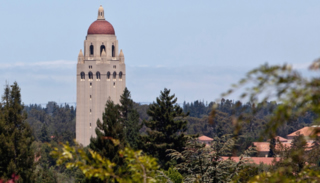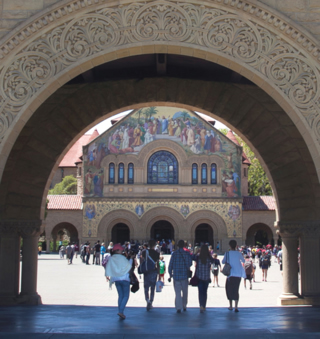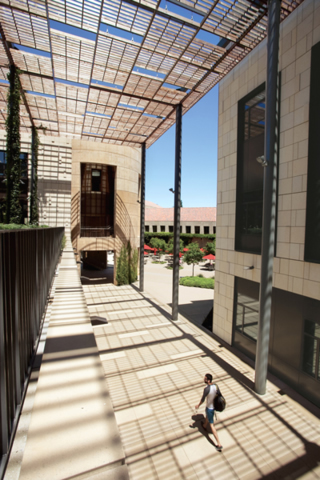Intellectual Paradise
It's an Eichler neighborhood like no other—a place where neighbors share strong ties, but ties that have nothing to do with their love for glass-walled houses.
 |
|
|
 |
|
|
It's a classic company town, like the copper mining town of Anaconda, or Robert Owen's 19th century New Lanark in Scotland, with which it shares a strong utopian impulse.
Stanford University, as its denizens know, is more than a place to study and teach. It's a full-blown community with close to 770 single-family houses, along with stores and a shopping center, a hospital, industrial parks and real parks.
Sylvan and serene, with winding ways, shaded paths, and hills, Stanford's neighborhoods can seem idyllic. Stanford, which owns the land, leases only to faculty and high-level administrators, who own the houses.
 |
|
|
Over the years, Nobel scientists, top economists, cutting-edge philosophers, and deep-thinking social critics have inhabited the neighborhood—many in Eichler homes. Matt Kahn, professor emeritus of design, who fashioned many model home interiors and more for Joe Eichler, lives in a campus Eichler.
A paradise for intellectuals, no doubt. But, Eichler owner Dick Scott says, “It was not some sort of ivory tower.”
“It's just like any middle-class, upper middle-class neighborhood,” he says, noting that his neighbors included not just professors but Stanford's fire chief and the campus architect, who also lived in an Eichler.
Joe Eichler understood that Stanford was a special place and, from the start of his career, went out of his way to build houses there. They ranged from his off-the-shelf models to custom versions of his tract homes to true custom homes to homes that could be considered experiments.
“Living on campus, you're part of a community,” says Betsy Palay, a scientific illustrator who shares an Eichler with her husband Terry Moe, a professor of political science who's known for taking on some tough customers. One of his books is Special Interest: Teachers Unions and America's Public Schools.
Even though their home, like many on campus, has a rural air, it's a 20-minute walk to the famous Quad and to lectures, museums, and, more to the point, tennis, which the couple plays with pathologists, software engineers, and more.
“They tend to be interesting people, good people,” Moe says of folks who live on campus.
There's a lot to be said for living on campus. The neighborhoods are heavily forested—though the newer areas were barren when Eichler started building. The walkways that wind through the neighborhood are used by bicyclists to get to work and by dog walkers every morning.
Homes tend to be further apart than in standard subdivisions. In many areas, homeowners can't see neighboring houses at all.
Donna Allison, who once lived in an Eichler in neighboring Palo Alto, remembers a neighbor there who built his kids a tree house. “The children would look down right into our backyard, on whatever we were doing.” On Stanford, she says, “We see no one and hear nobody. It's private.”
“It really works to live on campus,” says Dick Scott, a sociologist. “You combine working and living in ways that add to the student experience.”
Traditionally, professors use their homes for social and academic gatherings, bringing in students for seminars.
Before he retired from teaching, Dick Scott often invited groups of students to his home. For the sociology department, the Scotts would host dessert parties for 50. Joy would place picnic tables in the atrium, and folks would circle through the house and into the yard.




